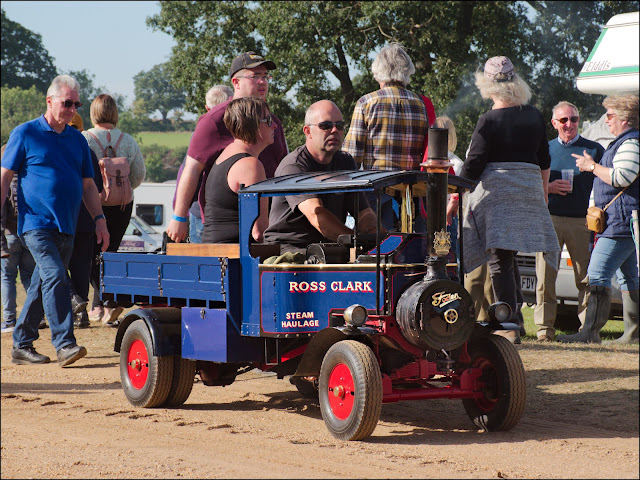Maybe the word needs translation for non-British English speakers, as well as those who valiantly struggle on with English as a second tongue:
Amusements - Games, rides, and other things that you can enjoy, for example at a fairground or at the seaside.
But it can just mean anything you find amusing, of course.
Even in English English it's rather fallen out of use in recent years, and if you see it nowadays it'll most likely be found in connection with vintage fairgrounds like this example found on one of the elderly lorries seen at the Bedfordshire Steam Rally last week.
And these are just little details spotted on a stroll around the amusements. I like to think that much can be revealed by small fragments of the scene - the kind of lettering used, the decorative elements, even just the chosen colours. Mind you, I must look a bit crazy as jam my lens up close to the target. My brother Les wanders off and pretends not to know me.
But when I've collected my raw materials I can assemble them (given sufficient time and patience) into a picture like the one above.
But what are my amusements when I'm confronted by the old tractors which I've photographed many times before?
I might try something like this. A photomontage composed of various nameplates, some more battered than others. Or I might like to compare the different tractor engines....
They went to a great deal of trouble painting the wheels of the great traction engines, using many different designs. My plan was to incorporate the best of them into a single image.
As visually appealing as all this freshly painted metalwork is, I often find myself on the look-out for the battle-scarred veterans. Like this old stationary engine. These could be hitched up to any piece of farmyard equipment, but had to be hauled from place to place by a team of horses. Then one day it dawned on someone that it could be made to power itself. This realisation spelled the end of the stationary engine and was another nail in the coffin of the farm horse.
Like the fairground amusements, you can spend far more time on these than you really intended to. Especially as I like to do everything from scratch rather than use a ready-made app. More time consuming, but more rewarding.
Take care.




















































